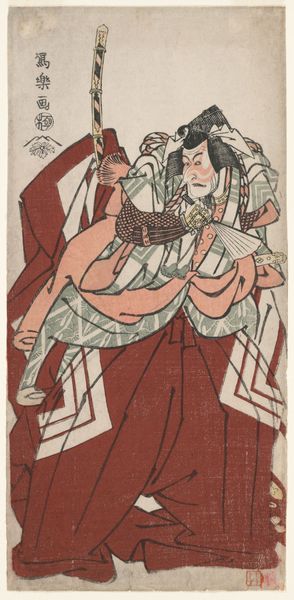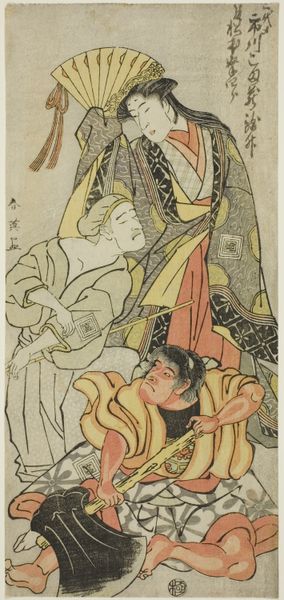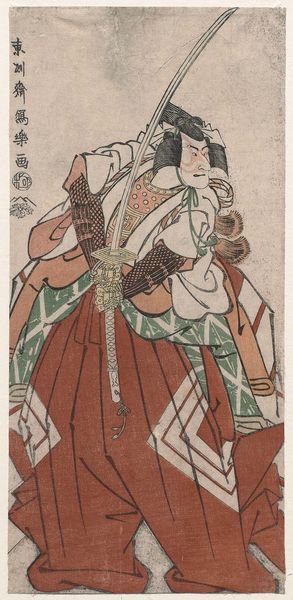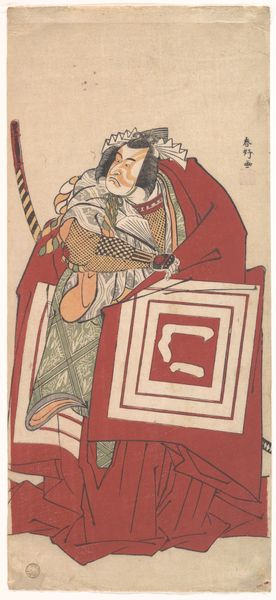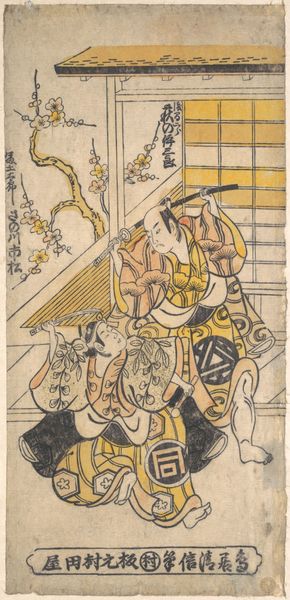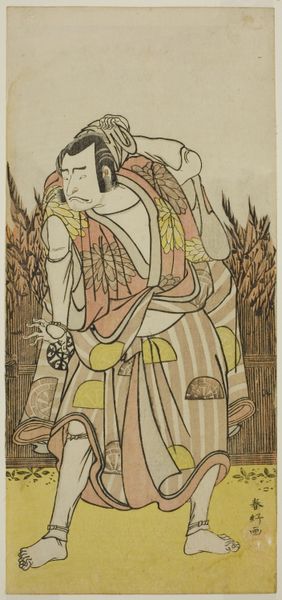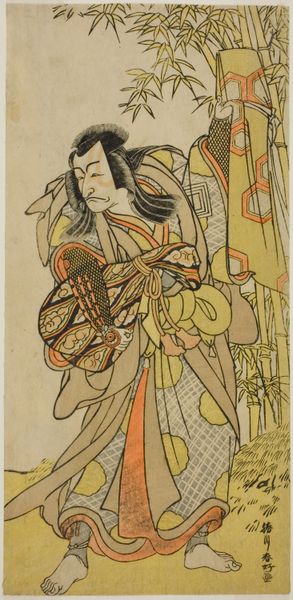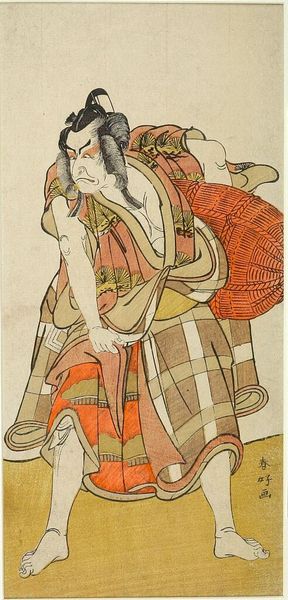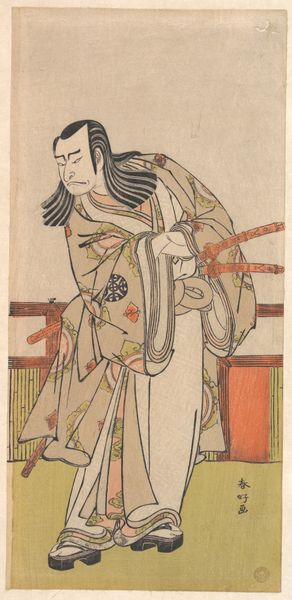
Actor Ichikawa EbizÅ as Kamakura GongorÅ Kagemasa from the play "Otokoyama Oedo no Ishizue - Shinobu Koi Suzume no Irodoki" (Kiri-za) Possibly 1794
0:00
0:00
Dimensions: Paper: H. 32.3 cm x W. 15.4 cm (12 11/16 x 6 1/16 in.)
Copyright: CC0 1.0
Curator: The color contrast is striking, isn't it? That bold red against the muted patterns—it creates a palpable tension. Editor: Indeed. This is a woodblock print by Tōshūsai Sharaku, part of the Harvard Art Museums collection. It depicts the actor Ichikawa EbizÅ as Kamakura GongorÅ Kagemasa. Curator: I see a deliberate exaggeration of form. The actor's pose, his facial expression—they're amplified, almost caricatured, to convey intense emotion. It's a powerful study in the grotesque. Editor: The play itself, "Otokoyama Oedo no Ishizue," was a key moment in the theatrical calendar. Sharaku’s prints immortalized these stage performances for a wider audience, cementing the actor's fame. Curator: The composition, too, is far from accidental. Note how the verticality of the staff and the actor's figure create a dynamic line that leads the eye. Editor: Precisely. By capturing these actors, Sharaku documented the cultural life and social hierarchies of his time, reflecting the Edo period's vibrant theatrical scene. Curator: The semiotic weight of this piece is impressive; Sharaku understood the communicative potential inherent in visual language. Editor: Agreed, the print’s enduring appeal lies in the intersection of artistic skill and historical context. Curator: A truly captivating confluence of form and feeling. Editor: A potent reminder of art's capacity to document and shape society.
Comments
No comments
Be the first to comment and join the conversation on the ultimate creative platform.
